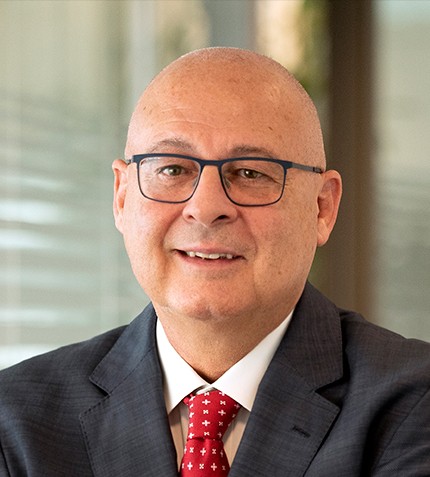
"What we need is the downstream industries to be created, for the REEs produced in North America to be used to manufacture products domestically."
Christopher Grove
PRESIDENT, COMMERCE RESOURCES
What are the latest updates at the Ashram deposit?
We completed another excellent drilling program in 2022, and when the drilling results came in February, a lot of people were astounded. This included an intersection that was close to 400 m at 2% rare earth oxide. The Ashram deposit extends 700 m north to south, and 300 m east to west, and we have drilled it with constant mineralization from the surface down to below 600 m.
We are also producing another 1.5 kg of the mixed rare earth carbonate we have been producing for the past year. We have much industry interest waiting for samples of this, and we will have to be parsimonious in that regard. This material has one the highest percentage of the four rare earth elements essential for the manufacture of permanent magnets. The mixed REE carbonates we have been producing are the most valuable produced and are fully radioactive-free.
What is the pathway toward production at Ashram?
We continue to be pushing ahead on all programs for the completion of the PFS, which we expect to complete by Q1 2024. Publishing it will allow us to start the 18-month process of data collection for the Environmental and Social Impact Assessment. During that period, we also want to finish the bankable FS. We will then be able to apply for a mining permit. In 2027, we should be in production.
How can North America reduce its dependence on China for REEs?
It is essential that more production and downstream manufacturing are initiated in North America. MP Materials could become the single largest magnet manufacturer in the West, with its 200,000 sqft facility in Fort Worth. What we need is the downstream industries to be created, for the REEs produced in North America to be used to manufacture products domestically. There is a lot of activity in terms of governments and industries looking at creating those nascent industries right now.
How do you assess the regulatory environment and permitting process in Québec?
The Prime Minister and Jonathan Wilkinson, the Minister of Natural Resources, have both spoken about streamlining the permitting process. Québec currently sits at a healthy number 6 on the Fraser Institute, but several years ago, there was a new bylaw passed in the southern two-thirds of Québec, which lowered Québec from one of the top spots. This additional requirement for another EIAS from the community that is closest to the mineral project is not applicable in Nunavik, where Ashram is. If the Fraser Institute looked at the difference between Nunavik and Québec, Nunavik might be number 1. Nunavik is the most streamlined jurisdiction in North America to advance a mineral project.
How important are REEs for a successful green transition?
REEs are by far the rarest commodities needed for the green transition. Back in March, Tesla made an announcement on investor day about how they would transition away from REE permanent drive motors, because of the mining and processing of REE being environmentally damaging. That was simply incorrect; For example, Mountain Pass, the only operating REE mine in North America, is running right on the other side of the state from Tesla, and the Sierra Club is not picketing their operations. The idea that REE mining and processing is damaging comes most specifically from the historical operations run by China.
Why will Commerce Resources be a great story for investors in the near term?
The Ashram project has the most attractive of the most standard commercialized fundamentals for an REE project. It is the largest monazite-dominant defined resource of the REEs hosted by a carbonatite. We have added ~15,000 m of drilling to the original resource, and we are excited to release the new resource in the PFS. The Ashram deposit will arguably be a little bigger and much more defined. Overall, we have not tapped into the totality of the resource, as we have only drilled from the surface to below 600 m. How many other REE resources does one need when one sits on a resource that has generations of production? Because of this resource and its inherent very high distribution of the magnet fee REEs, we have more expressions of interest from industry majors than ever before.










